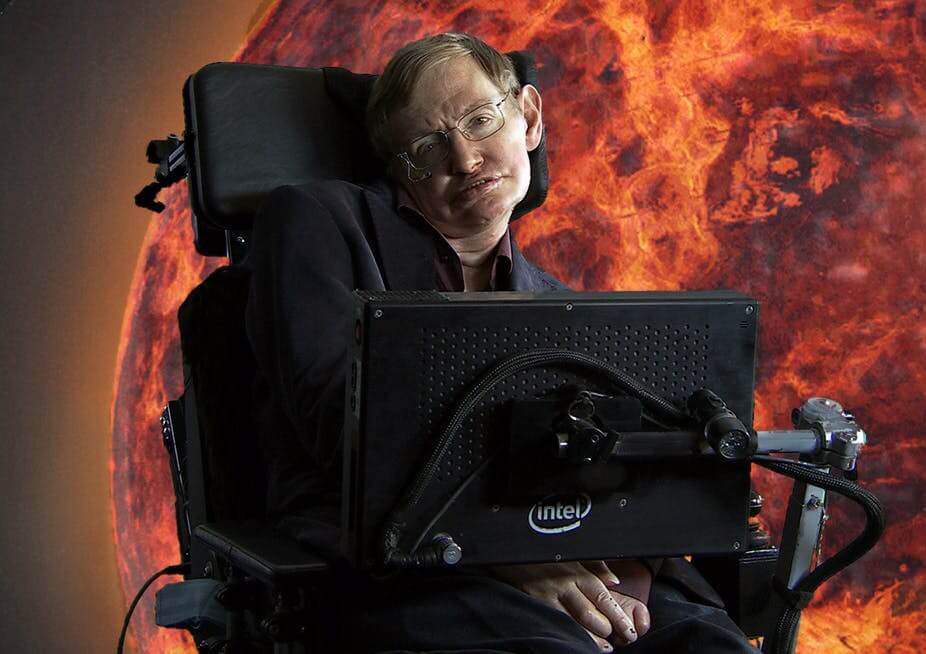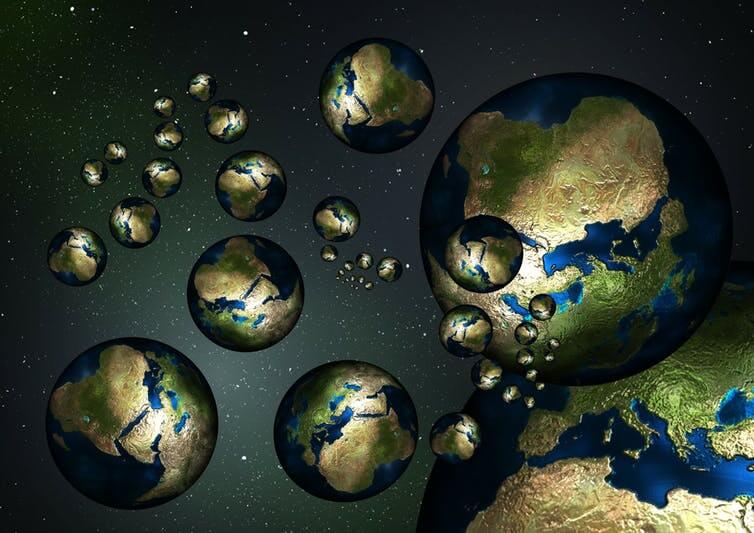
Legend has it that albert Einstein spent his last hours on Earth, tracing and drawing something on a piece of paper in the last attempt to formulate a theory of everything. 60 years later and another legendary scientist in theoretical physics, Stephen Hawking, leave this world with similar thoughts. We know that Hawking believed that the so-called M-theory is our best chance to create a complete theory of the universe. But what is it?
Since then, in 1915, had formulated the General theory of relativity of Einstein, every physicist wanted to reconcile our understanding of the infinitely small world of atoms and particles with infinitely large scale of the cosmos. If the latter is well described by the Einstein equations, the first with extraordinary accuracy predicted so-called Standard model of fundamental interactions.
Our current understanding is that the interaction between physical objects is described by four fundamental forces. Two of them — gravity and electromagnetism — are revealed to us at the macroscopic level, we deal with them every day. The other two — weak and strong interactions occur on a very small scale and only when we are dealing with subatomic processes.
The standard model of fundamental interactions provides a single structure for three of these forces, but gravity does not fit into this picture. Despite the accurate description of large scale phenomena such as the behavior of a planet in orbit or the dynamics of galaxies, General relativity stops working at very short distances. According to the Standard model, all forces are mediated by certain particles. In the case of gravity doing the work of graviton. But when we try to calculate the interactions of these gravitons appear meaningless infinity in the equations.
A complete theory of gravity must be working at any scale and to take into account the quantum nature of fundamental particles. This would allow you to fit gravity into a unified structure with the other three fundamental interactions, thereby creating the proverbial theory of everything. Of course, since then, since the death of albert Einstein in 1955, has done significant progress in this area. Our best candidate today bears the name M-theory.
Revolution strings
To understand the basic idea of M-theory, need to go back to the 1970s when scientists realized that instead of describing the universe, based on point particles, they would have been better to describe in the form of oscillating strings (power tubes). A new way of understanding the fundamental constituents of nature led to the solution of many theoretical problems. First of all, separate the vibration of the string can be interpreted as the graviton. And in contrast to the standard theory of gravity, string theory can describe the interaction mathematically, and not get strange infinities. So, gravity can be included in a combined structure.
After this exciting open theoretical physicists put a lot of effort to realize its consequences. But, as often happens with research, the story of string theory is full of UPS and downs. At first people were puzzled by the fact that she predicted the existence of a particle that moves faster than light, so-called “tachyon”. This prediction came into conflict with all experimental observations, and cast a serious shadow on string theory.

However, this issue was resolved in the early 1980-ies together with the introduction in string theory the so-called “supersymmetry”. It predicts that each particle has its own superpartner and unusual coincidence, that the same condition actually eliminates the tachyon. This first success is widely known as the “first string revolution”.
Another unusual feature is that string theory requires the existence of ten space-time dimensions. Currently we know of only four: depth, height, width, and time. Although it looks like a serious obstacle, was proposed several solutions, and currently it all seems rather unusual feature, rather than a problem.
For example, we could exist in four-dimensional world without any access to additional measurements. Or extra dimensions could be compact and are covered in such a small scale that we could not see them. However, various compactification would lead to different values of physical constants and different laws of physics. A possible solution is that our universe is just one of many in an endless “multiverse” managed by different physical laws.
M-theory
There was still one problem that haunted the theorists of strings of the time. A thorough classification showed the existence of five different consistent string theories, and could not understand why nature should choose one of the five.
And here comes into play M-theory. During the second revolution of the strings in 1995, physicists have assumed that the five consistent string theories are actually different persons unique theory, which exists in eleven space-time dimensions called M-theory. It includes every string theory various physical contexts, while remaining workable for all. This is an incredibly fascinating picture has led most theoretical physicists to the idea that M-theory will be the theory of everything — and it is also mathematically more consistent than all the other proposed theories.
Anyway, so far M-theory are unable to produce predictions that can be tested experimentally. Supersymmetry is currently being tested at the Large hadron Collider. If scientists could find signs of the existence of superpartners, it would ultimately strengthen the position of M-theory. But modern theoretical physics is not yet able to give verifiable predictions, and experimental may not present for this testing experiments.
Most of the great physicists and cosmologists obsessed with finding this beautiful and simple description of the world, which would explain everything. And although we are still far from this, without the brilliant and creative people like Hawking that would be impossible.
Stephen Hawking, hoped that M-theory will explain the Universe. What is this theory?
Ilya Hel